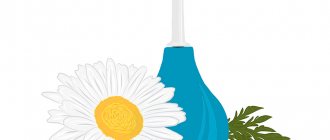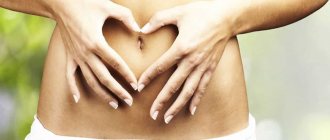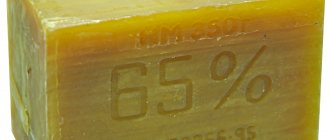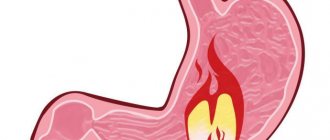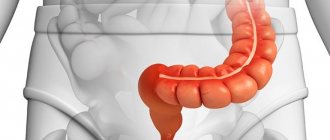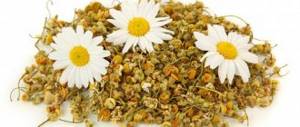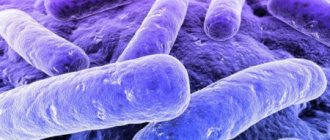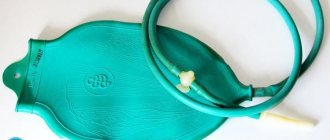Article prepared by:
Vasily Babkinsky
Doctor of the highest category
To prevent and treat intestinal pathologies, an enema is often used. This remedy will be effective if the procedure is carried out correctly. An enema with chamomile at home will help get rid of the problem without consequences.
Everyone knows that an enema can quickly get rid of constipation.
Enema technique
The procedure technique is almost the same. Depending on the purpose of treatment, the volume of fluid administered and the concentration of chamomile may vary. At home, you can do douching yourself without worrying about your health.
Mandatory precautions and rules:
- the tip of the bulb must be inserted into the rectal area up to the limiting line;
- use only warm water at a temperature of 37 degrees (neither hot nor cold);
- enter the exact volume of liquid specified in the recipe;
- The size of the pear is selected according to the patient’s age; there are small sizes for children;
- try to keep the solution in the intestines for at least 20 minutes;
- It is advisable to do an enema 1-2 hours after eating;
- lubricate the tip of the syringe with Vaseline for better glide;
Under no circumstances should you use cold water, as this may cause unwanted intestinal spasms. If you feel that by the time of the enema you have increased gas formation or your intestines are clogged, then you should start with a microenema and only then, if necessary, move on to the cleansing option.
Feedback on the effectiveness of procedures
I had never imagined before that enemas with chamomile infusion help so well in the treatment of intestinal diseases. A friend of mine recommended this method to me; she works as a paramedic in a neighboring village and knows how useful herbal compounds are.
When I started doing the procedures, I immediately noticed improvements. My pain in the lower abdomen has disappeared and now the inflammation is gradually disappearing. I advise everyone who suffers to try these treatment methods.
I knew that enemas with herbal infusions were useful, but I was learning for the first time that I also needed to do microenemas. I will definitely recommend it to my father. He has been suffering from this unpleasant disease for a long time. The main thing is not to forget the recipes! I think he will be very grateful!
Indications for use
Chamomile intestinal lavage can be used for both treatment and prevention. The procedure is carried out at home and is prescribed for the treatment of diseases of the pelvic organs.
List of indications for the use of enemas:
- inflammatory bowel diseases;
- constipation (even chronic type);
- prostatitis of acute and chronic forms;
- severe pain in the perineum or intestines;
- hemorrhoids, anal fissures;
- prevention of constipation;
- dysbacteriosis;
- preparation for surgical treatment.
Douching will help restore normal intestinal microflora and “populate” it with beneficial microorganisms. For preventive purposes, the procedure is prescribed 2 times a year. Healing properties are manifested in the fight against rectal problems, especially if it is associated with inflammatory processes.
Enemas are often prescribed before a colonoscopy or surgery. Chamomile infusion is an additional antibacterial measure that helps prevent tissue infection.
Causes of colitis
Colitis is an inflammation of the colon mucosa and is equally common in both men and women. It ranks second among gastrointestinal pathologies in terms of prevalence.
Causes:
- unbalanced and irregular diet, which causes fermentation processes in the intestines;
- damage by pathogenic microorganisms;
- exposure to chemicals and industrial poisons;
- chaotic use of antibiotics for a long time;
- helminthiasis, infection with various parasites;
- autoallergy, as a consequence of the body’s increased sensitivity to proteins.
Contraindications and side effects
Despite the harmlessness of the components, chamomile therapy has contraindications. Enemas can irritate the intestinal walls and, when used frequently, cause antispasmodic pain. Before starting a course of therapeutic enemas, consult your doctor.
The list of contraindications includes:
- acute stage of inflammatory diseases of the gastrointestinal tract in severe form;
- rectal prolapse;
- tumors, cancerous lesions of organs;
- acute undiagnosed pain.
Don't be shy, tell your doctor about your intestinal problem. To make a diagnosis, you can contact a gastroenterologist or proctologist. Chamomile treatment is used only as an additional measure to enhance the effect of medications.
Types of microenemas
Colon cleansing is carried out if diagnosis or treatment is necessary. Therefore, this type of enemas is selected individually . Most often, microenemas are used for the following diseases:
- constipation;
- sheep feces;
- weakness and loss of strength;
- seed exhaustion;
- state of chilliness;
- dryness and flaking of the skin;
- flatulence;
- irregular periods;
- cystitis;
- hemorrhoids.
In addition, enemas are used before childbirth, operations, and various intestinal examinations.
There are the following types of microenemas:
- Cleansing (coffee, starch, honey).
- Emollients (milk).
- Laxatives (hypertonic, glycerin, oil).
- With chamomile.
- Emulsion.
- With evaporated urine.
- Microclyster "Mikrolaks".
Since any intervention in the body is stressful for it, before using this or that enema, you must consult with a specialist or familiarize yourself with complete information about it.
general information
The genus chamomile belongs to the Asteraceae, or Asteraceae, family. Unites about 30 types of herbs. Habitat: Eurasia, America and South Africa.
In Ukraine, three types of chamomile are most widespread:
- chamomile (pharmaceutical);
- chamomile (non-lingual);
- mayweed.
The first species is a typical representative of the chamomile genus. It is distributed throughout almost all of Europe, in some areas of Asia and North America. In Ukraine, the largest plantings are found in the Black Sea part of the Kherson region. Wild chamomile can be grown in gardens by planting seeds.
Officinalis chamomile must be distinguished from other species of this plant: it has an elongated conical hollow receptacle.
Biological features
Chamomile is grown in seedlings and without seedlings. Sowing of seeds in the ground is carried out at the end of May, sowing of seeds for seedlings - in March with planting of seedlings in May. The flowering period of the plant is June-September.
Chamomile loves bright sunlight. The most suitable soil for it is slightly alkaline or neutral. The plant grows best in areas with deep groundwater. Chamomile can be found in meadows, wastelands, roadsides, and gardens.
Botanical characteristics
Chamomile has a straight, cylindrical, bare stem with a height of 15 to 50 cm. The leaves of the plant are alternate, twice or thrice pinnately dissected into thin thread-like segments.
The flowers are small, collected in baskets at the ends of the stem. The marginal flowers are white, ligulate, pistillate. The middle flowers are yellow, bisexual, tubular. The fruit of chamomile is an oblong achene without a tuft.
Procurement and storage of raw materials
Chamomile flower baskets are used for medicinal purposes. You can harvest both wild and cultivated plants.
Features of collection
Chamomile flowers are harvested when the petals of the plant have fully opened and assumed a horizontal position.
When the flowers have not yet opened, chamomile has insufficient healing properties and a low concentration of essential oils, and when they drop, they can crumble when dried.
When the chamomile flowers have bloomed, they need to be prepared within 3-5 days. Collection is carried out in dry weather by hand, combs or special machines. Flowers should be picked as close to the base as possible or in such a way that the length of the remaining peduncles is no more than 3 cm.
Flowers are placed in baskets or bags. On the same day, as quickly as possible after collection, you need to organize the drying of the raw materials.
Drying and storage conditions
The flowers, spread out in a thin layer, are dried in the shade or in a room with good ventilation. Dryers with temperatures up to 40 °C can be used. It is not advisable to touch the raw materials during drying, because the flowers may fall off. It takes 5–7 days to dry completely. The raw material is considered ready if the receptacle becomes leathery-dry when rubbed between the fingers.
The percentage of dry raw materials is 25–27%. Dried chamomile flowers are stored in paper bags, cardboard or plywood boxes lined with paper. The storage room should be dry, well ventilated and protected from light.
Medicinal properties of chamomile
Chamomile is a natural antiseptic that is famous for its wound healing and antibacterial properties. Herbal tea has a minimal number of contraindications and side effects. The decoction can be used to bathe babies.
Healing properties of chamomile:
- Antiviral agent. Plant extracts and decoctions are most often used for internal use. Chamomile tea will help get rid of bacteria accumulated inside the respiratory system. The drug is used to treat ARVI and even sore throat.
- Antispasmodic effect. For problems with digestion, increased gas formation and to improve the process of digesting food, take chamomile decoction. This folk remedy helps eliminate spasms of the gastrointestinal tract, absorbs and removes toxins and waste from the body.
- Pain reliever. Chamomile enema helps with constipation and painful bowel movements. Thanks to its analgesic effect, chamomile decoction helps eliminate pain in the intestinal area; it is also highly effective against colitis, diarrhea, flatulence and an attack of gastritis.
- Accelerates metabolic processes. The plant has a mild diuretic effect, frees the body from accumulated waste and toxins. Drinking chamomile tea will help you lose excess weight and normalize liver and kidney function.
- Anticonvulsant effect. Some medications are made based on chamomile extract. Herbal preparations successfully cope with convulsive attacks and help stop bleeding.
- Sedative effect. The plant has a beneficial effect on the central nervous system, helps normalize sleep, eliminates insomnia and nervous tension. Chamomile tea is a natural stress reliever.
It is recommended to use only pharmaceutical chamomile internally. Also, plant extracts are widely used in cosmetology. Based on plant extracts, children's creams and lotions are made, and lines of cosmetics for sensitive skin are produced. Chamomile rarely causes allergies and individual intolerance reactions.
Video
Watch the video instructions on how to properly do an enema at home.
Folk remedies based on medicinal plants are often used to treat male diseases. One of the most effective components of such medicines is chamomile. An enema with chamomile for prostatitis helps to quickly relieve inflammation, pain symptoms and significantly improve the patient’s condition. A chamomile enema helps improve blood flow and restore the functioning of the genitourinary system. The antibacterial property of the plant has a beneficial effect on the intestinal microflora and destroys pathogenic bacteria. Chamomile solution is recommended for use during complex therapy of any form of inflammation of the prostate gland as an adjuvant.
Option #1
If the patient does not suffer from constipation, that is, the absence of independent stool for 3 days, then preparation for the study consists of the following:
1. 2 days before the colonoscopy, you must switch to a special (slag-free) diet, excluding vegetables and fruits, potatoes, herbs, berries, mushrooms, legumes, and brown bread from your diet. Allowed: broth, semolina porridge, egg, boiled meat, boiled sausage, fish, cheese, butter, fermented milk products, except cottage cheese.
On the eve of the colonoscopy and on the day of the examination, only liquid food is allowed - boiled water, broth, tea.
2. On the eve of the colonoscopy at 14-15 hours you need to take 30-40 grams of castor oil (2 tablespoons). For more comfortable use, the oil can be dissolved in half a glass of kefir.
Replacement of castor oil - aqueous solution of magnesium sulfate 30% - 150 ml at a time. Other laxatives (pursenide; bisacodyl 5 tablets - taken on the eve of a colonoscopy at 12.00 noon - stool usually appears after 6-8 hours) do not completely cleanse the colon, so they should be used in the preparation process if castor oil is intolerant. After independent bowel movements, you need to do 2 enemas of 1.5 liters of regular, room temperature water. Enemas are given at 20 and 21 hours.
3. On the morning of the colonoscopy (usually at 8 and 9 am), you need to do 1-2 more similar enemas, but always with “clean” water.
CLEANSING ENEMA
An Esmarch mug is used to perform a cleansing enema. It can be bought at almost any pharmacy
An Esmarch mug is a reservoir (glass, enamel or rubber) with a capacity of 1.5-2 liters. At the bottom of the mug there is a nipple onto which a thick-walled rubber tube is placed.
For a rubber reservoir, the tube is its direct continuation. The length of the tube is about 1.5 m, diameter is 1 cm.
The tube ends with a removable tip (glass, plastic) 8-10 cm long. The tip must be intact, with smooth edges. It is preferable to use plastic tips, since a glass tip with a chipped edge can seriously injure the intestine. After use, the tip is washed well with soap under running warm water and boiled.
Next to the tip on the tube there is a tap that regulates the flow of fluid into the intestines. If there is no tap, it can be replaced with a clothespin, clamp, etc.
For enemas, only water from proven sources is used (one that you can drink). For children, it is better to use only boiled water. The water temperature is about 37-38 degrees. Colder water significantly increases intestinal motility and causes unpleasant pain. Using water with a temperature of more than 40 degrees for an enema is dangerous to health.
Methods of administering an enema.
1st method
Lie on the bed closer to the edge on your left side with your legs bent and pulled towards your stomach. Place an oilcloth (plastic film) under the buttocks, the free edge of which is lowered into a bucket in case you cannot hold water. Pour 1-1.5 liters of water at room temperature into Esmarch's mug, lift it up to a height of 1-1.5 m and lower the tip down to release a small amount of water and along with it air from the tube.
Fill the tube (remove some liquid from the tube), then, without lowering the mug, close the tap on the rubber tube.
Check if the tip is broken, lubricate it with Vaseline (soap, vegetable oil) and, spreading the buttocks, insert the tip into the anus with light rotational movements.
The first 3-4 cm, insert the tip towards the navel, then another 5-8 cm - parallel to the tailbone. If there are obstacles and the tube rests against the intestinal wall or hard feces, remove it 1-2 cm and open the tap.
Pressurized water will enter the large intestine. Almost immediately there will be a feeling of “fullness” in the intestines and an urge to stool. At these moments, you need to reduce the flow rate of liquid from the mug by closing the tap on the tube or squeezing it. Gentle circular stroking of the abdomen will help reduce discomfort.
If the tip is clogged with feces, it should be removed, cleaned and reinserted. If the rectum is filled with feces, try to wash it away with a stream of water. Esmarch's mug does not need to be completely emptied. Leaving a little water at the bottom to prevent air from entering the intestines, close the valve that regulates the flow of liquid and remove the tip.
Place a pre-prepared pad (cloth, repeatedly folded strip of toilet paper, etc.) on the perineum, which must be pressed between the legs.
2nd method (“according to Hegar”)
Get on all fours in the bathroom (knee-elbow position), leaning on one elbow, and insert the tip into the rectum with your other hand.
The tip must be inserted slowly and carefully, especially with hemorrhoids. Having inserted the tip, lower your head and shoulders lower and breathe deeply, but not often, with your stomach, “sucking in air through your mouth or nose.” If not all the water has entered, but you already feel pain in the intestines, turn off the tap on the hose and breathe deeply.
When the water in the mug runs out, remove the tip and place a pre-prepared gasket on the anus.
It is advisable to hold the water for 10 minutes. To do this, lie on your back and breathe deeply. The pain and feeling of fullness in the abdomen are calmed by stroking. If possible, walk around with the injected water or lie on your stomach. When administering a cleansing enema, you need to ensure that no more than 1.5-2 liters of liquid are administered at a time. If it is necessary to give two enemas in a row, you should maintain an interval of 45 minutes to 1 hour between them, making sure that the rinsing water from the first enema has completely drained.
Option No. 2
Preparation for colonoscopy with the drug "Fortrans" (France)
The required degree of cleansing of the large intestine is achieved:
- no cleansing enemas
- without additional laxative intake
- without long-term adherence to a slag-free diet
- without outside help
- without abdominal pain and excessive gas formation
The drug solution has a fruity taste. This type of preparation is ideal for patients with diseases of the liver, gallbladder and pancreas.
The action of the drug is based on the combination of a high molecular weight polymer with an isotonic solution of electrolytes, which prevent the absorption of water from the stomach and intestines. The solution promotes accelerated bowel emptying. The presence in the solution of electrolytes corresponding to the osmotic pressure of physiological solution replenishes the intestinal secretion of potassium, sodium, chlorine bicarbonate, and therefore there are no changes in the composition of body fluids.
There are two possible types of preparation with Fortrans:
A. One-stage preparation with Fortrans.
The day before (the day before the test), exclude vegetables, fruits, potatoes, berries, mushrooms, and greens from your diet.
On the day of colonoscopy, you can only drink sweet tea and boiled water.
On the day of colonoscopy, depending on weight (up to 50 kg - 2 sachets, 50–80 kg - 3 sachets, over 80 kg - 4 sachets), the drug is diluted in water boiled at room temperature at the rate of 1 sachet per 1 liter of water, the required amount of solution is drunk on the day of colonoscopy from 5-6 to 10 am in fractional portions (a glass every 15-20 minutes). The solution can be washed down with boiled water. The stool begins to pass 1.0-1.5 hours after starting to take the drug and stops 2-3 hours after taking the last dose of the drug.
On the day of the test, before the colonoscopy, you can drink a cup of sweet tea.
Colonoscopy may be performed no earlier than 4 hours after the last dose of the drug.
B. Two-stage preparation with Fortrans.
Preparation is carried out both on the eve of the colonoscopy and on the day of the study.
On the eve of the colonoscopy, breakfast is allowed until 12 noon (semolina, yogurt, scrambled eggs, tea). After 12.00 clear broth, tea, and boiled water are allowed.
On the eve of the colonoscopy, depending on the weight (up to 50 kg - 1 sachet, 50-80 kg - 2 sachets, over 80 kg - 3 sachets), the drug is dissolved in water boiled at room temperature at the rate of 1 sachet per 1 liter of water. The required amount of solution is drunk from 17 to 20-21 hours in fractional portions (a glass every 15-20 minutes). The solution can be washed down with boiled water. The stool begins to pass 1.0-1.5 hours after starting to take the drug and stops 1-3 hours after taking the last dose of the drug.
On the day of colonoscopy, from 7 to 9 a.m., drink another 1 liter of solution at the rate of 1 sachet per 1 liter of water. After taking the last dose of the drug, stool stops after 1-2 hours. The solution can be washed down with boiled water. Colonoscopy may be performed no earlier than 4 hours after the last dose of the drug.
During the days of preparation for colonoscopy, it is possible to take medications necessary for the patient, with the exception of iron supplements and activated carbon.
Colonoscopy is a rather complex procedure, so the patient needs to be given as much help as possible by the doctor and nurse, namely, follow all instructions.
In some pathological conditions, to clarify the diagnosis, a microscopic examination of the changed areas of the mucous membrane is necessary, which the doctor takes with special forceps - a biopsy is performed, which extends the examination time by 1-2 minutes.
During a colonoscopy, you will have a feeling that your intestines are full of gases, causing you to have the urge to defecate. At the end of the study, the air introduced into the intestine is sucked out through the endoscope channel. Pain during this procedure is moderate because the intestine stretches when air is introduced into it. In addition, at the moment of overcoming the bends of the intestinal loops, intestinal displacement occurs. At this point, you will experience a short-term increase in pain. The success and informativeness of the study is determined mainly by the quality of preparation for the procedure, therefore it is necessary to pay the most serious attention to the implementation of the recommendations given. In order to examine the mucous membrane of the colon, it is necessary that there is no feces in its lumen.

